The kitchen is typically one of the rooms in which you spend large amounts of time, whether it be creating a meal for one, or inviting family and friends to join you. When adapting a kitchen for aging in place, it’s important for the kitchen to retain that significance, so that you may keep alive those relationships – and create more – while still securing your own comfort and safety.
We do at times take for granted our ability to navigate easily within our own kitchen. And, it is particularly difficult to accept that the kitchen – which is often the heart of the home – is also one of the most potentially hazardous rooms. But, with proper planning, those risks can be minimized and even eliminated.
5 Issues to Consider When Adapting Your Kitchen for Aging In Place
- Flooring
Flooring throughout the house should be a primary concern when adapting your home, and the kitchen is certainly no exception. The kitchen, as you no doubt know and appreciate, has its own special considerations. Because spills are common and can be challenging at times to clean up, non-glare floor coverings are recommended to avoid missed spills and consequent falls. (Shining surfaces with glossy finishes reflect light that makes it difficult for anyone to avoid slipping on spills, regardless of age.)
Flooring materials such as vinyl, wood, or linoleum flooring are sometimes the best options for aging in place residents, particularly if you or your loved one is confined to a wheelchair. Hardwood is also easier to roll a wheelchair across than tile or carpeting. If you do choose carpet, however, low pile carpeting is easiest to maintain. If you instead choose tile, remember that the less distance you have between tiles, the lower the chances you might have of a slip and fall accident.
When I work with my aging-in-place renovation clients, I steer them towards non-slip vinyl as a good first choice for safe flooring. And, if you’re a DIYer looking for a quality floor that’s easy to install, vinyl tiles, sheets, and planks are all great choices.
Vinyl Flooring Product Suggestions:
Selkirk Vinyl Wood Grain Plank
This is a beautiful vinyl plank option that’s durable and waterproof – perfect for kitchens and the occasional spill.
Achim Home Furnishings Vinyl Floor Tile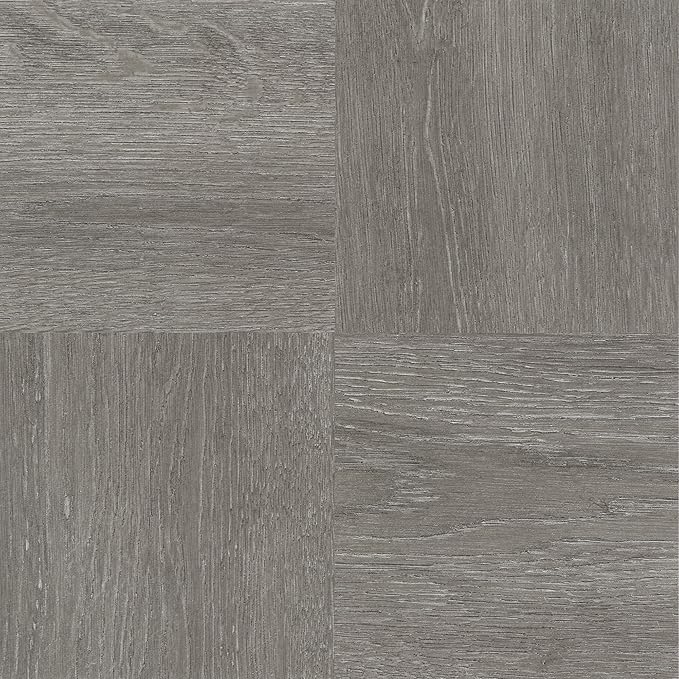
If you’re looking for a square-patterned look rather than a plank, this charcoal grey wood vinyl tile is a great way to add safety and aesthetics into your kitchen.
 Rubber-Cal Terra-Flex Oak Sheet Vinyl
Rubber-Cal Terra-Flex Oak Sheet Vinyl
This vinyl sheet from Rubber-Cal is designed to mimic the look of older wood and will give your kitchen floor a subtle vintage look. It comes in three color options – whitewash oak, nutmeg, and colonial oak.
You can read more about selecting safe kitchen flooring by taking a look at my article, “How to Find Flooring That’s Safe, Inexpensive, and Easy to Install for Aging in Place.”
More Reading: The Ultimate Guide to Flooring for Aging in Place
- Lighting
The trick to choosing your lighting plan is to find the optimal combination of ambient and artificial light to illuminate cheerfully but effectively the entirety of your kitchen by adding accent or task/track lighting in key places where necessary for you – under the cabinets, for example.
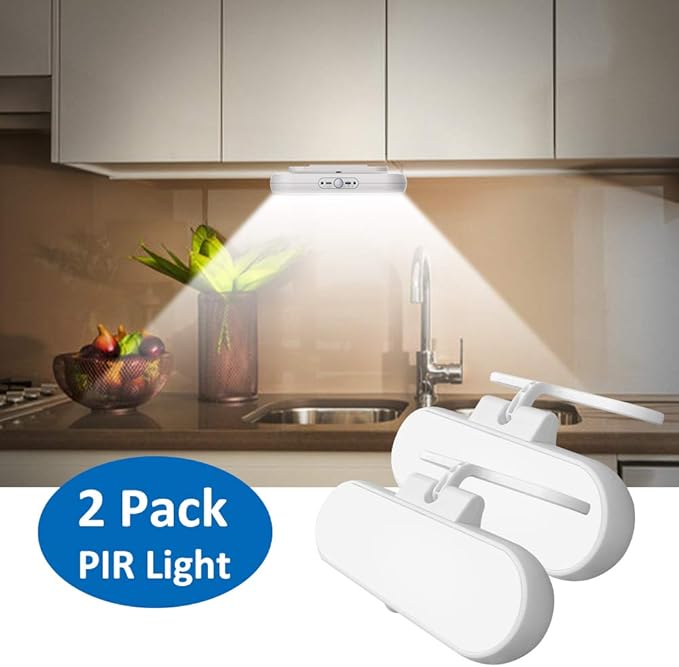 Strip Lighting Product Suggestion: Auspice Under Cabinet Strip Light.
Strip Lighting Product Suggestion: Auspice Under Cabinet Strip Light.
These Auspice light strips are rechargeable and cordless, making them practical and attractive as you safely navigate your kitchen.
Read more about this and other great under-cabinet strip lights in my article, “Where and How to Install the Right Lighting Strips for Aging in Place.”
Light switches should either be accessibly placed in the kitchen – at arm’s length, near the entrance, etc. – and/or you may opt for an automatic light switch, which turns on as soon as a person enters the kitchen. Dimmer switches are also a big plus for older adults, allowing them to bring the right amount of light into a room so their eyes are comfortable and they can see effectively.
 Light Switch Product Suggestion: Gosund Smart Dimmer Switch
Light Switch Product Suggestion: Gosund Smart Dimmer Switch
This is a great switch for aging-in-place for so many reasons. As a smart switch, its dimmer and on/off switch are compatible with Alexa and Google Home. That means that older adults can control the lights in their home with their voice, keeping sore hands from feeling pain.
Read more about this and other dimmer light switches in my article, “The 4 Best Dimmer Switches for Aging in Place.”
Recessed lights are another way to add illumination to a kitchen with a single light source. Depending on your budget, you may try increasing the wattage of the bulbs in your current fixtures. You may also consider switching to LED lighting, which gives off the same power for a fraction of the energy use of traditional incandescent lights.
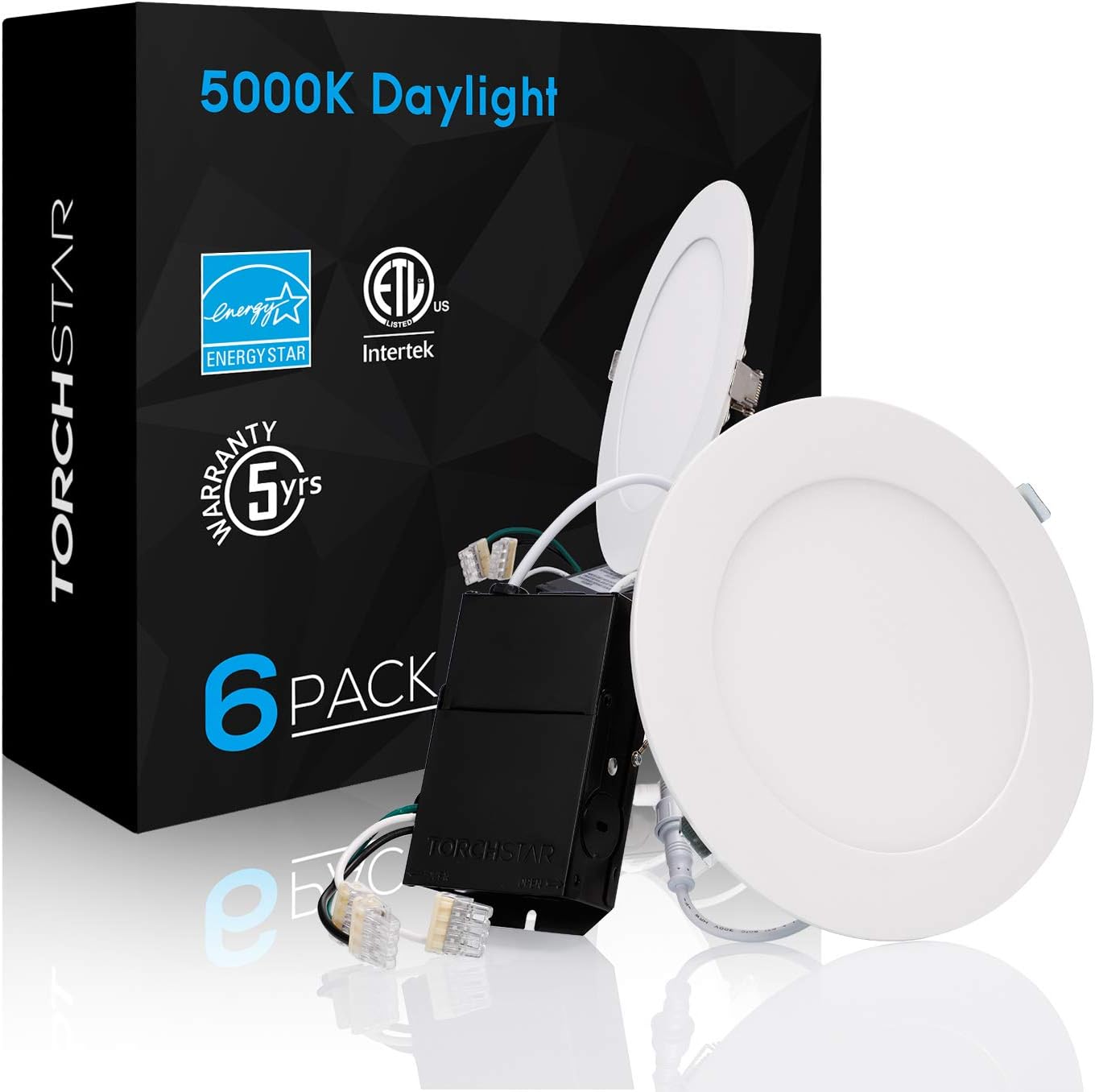 Recessed Lighting Product Suggestion: TORCHSTAR Elite Series LED Recessed Light Set
Recessed Lighting Product Suggestion: TORCHSTAR Elite Series LED Recessed Light Set
This is a great all-around recessed light set from TORCHSTAR. You get six dimmable LEDs that are easy to install. Choose between one of several light shades, ranging from warm to cool.
You can read more about the best recessed lighting for your aging-in-place renovation and how to install them by checking out my article, “How to Install Recessed Lighting for Aging in Place.”
Regardless of what you decide, remember that the colors and materials you choose for the surfaces of your kitchen will influence the effectiveness of your lighting decision. You should also think to highlight the edges of your countertops (and cabinets) with bright colors, but – like your flooring – the paint or surface material should not be shiny in order to avoid glare.
More Reading: The Ultimate Guide to Lighting for Aging in Place
- Countertops
When it comes to countertops, not only could color-coding the edges stave off injuries, but some residents choose to also round their corners and edges. No matter what you decide, having the counters be a different color than the walls and cabinets can help to orient yourself when necessary. There should also be emergency “grab handles” within reach – either one long handle running the length of the countertop, or several smaller handles placed at intervals.
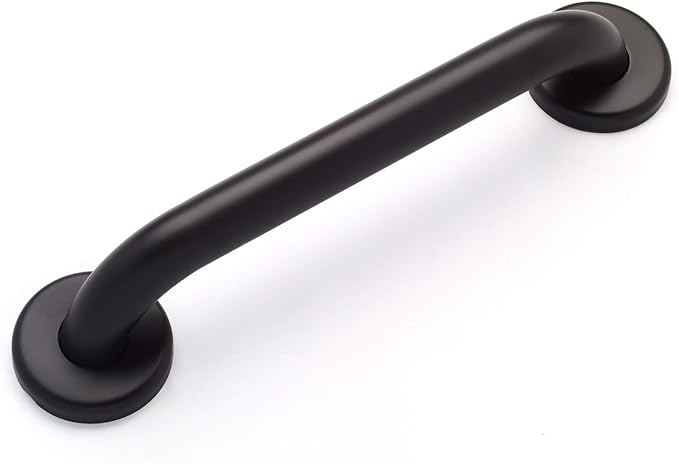 Grab Bar Product Suggestion: Lifeline Straight Grab Bar
Grab Bar Product Suggestion: Lifeline Straight Grab Bar
This 12-inch grab bar is short enough to place just about anywhere in the kitchen for added support.
Just as is the case with flooring, keep in mind the maintenance of the materials you choose for your countertops and take into consideration the potential hazard of glare.
More Reading: 14 Issues To Be Aware of When Choosing Kitchen Counters for Aging in Place
- Cabinets
Obviously, you need to be able to access your cabinets easily. Typically, in a plan designed to help best serve an aging homeowner, this means lowering your cabinets by approximately three inches. You may also consider, for those higher cabinets, either a pullout step (lower cabinets) or a pull-down shelf, so that you don’t have useful storage space wasted. In evaluating your cabinets overall, however, replacing knobs with lever-style handles is generally the preferred alternative.
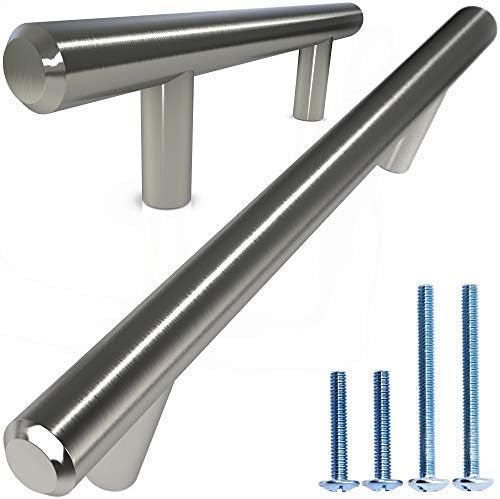 Cabinetry Hardware Product Suggestion: Alpine Hardware Handle Lever
Cabinetry Hardware Product Suggestion: Alpine Hardware Handle Lever
Replacing your cabinet knobs with a high-quality 3-inch or wider lever handle is going to create far less pain when sore, arthritic hands try to open cabinets. This Alpine Hardware lever is ideal because of its width and smooth, circular handle that’s easy to grasp.
For lower cabinets, most find the pullout cabinet model to be the best option – particularly if you regularly need to access items in the back of the shelf. Again, this is a design aimed at optimizing your storage space. Lazy Susan cabinets allow even more access than pullout cabinets; unfortunately, their size can make it tricky to find ways to fit them into your remodeling plans. (Do remember to keep heavier, bulkier items in the lower shelves in order to avoid injury.)
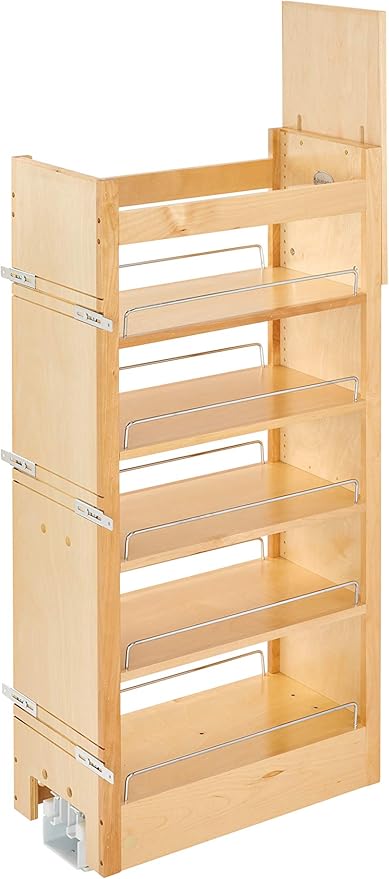 Pull Out Pantry Product Suggestion: Rev-A-Shelf Cabinet Pantry
Pull Out Pantry Product Suggestion: Rev-A-Shelf Cabinet Pantry
These pull out pantry solutions from Rev-A-Shelf are one of my favorite products for the aging-in-place home. If your parent is in a wheelchair, this pull out will put everything they need within reach. And even if your parent doesn’t suffer from mobility issues, having pantry items in a pull out means less reaching and less chance of a fall.
You can read more about pull out pantries for the aging-in-place kitchen in my article, “How to Install a Pull Out Pantry for Aging in Place.”
- Your “Work Triangle”
You use your oven, sink, and refrigerator frequently throughout the day, and often in conjunction with one another. That’s why having them placed as near to each other as possible is the best way to save time while you prepare, cook, and store your food, as well as when you’re cleaning up. Also, try to keep your refrigerator interior at a similar – if not the same – level as your sink and oven, so you can easily transfer food from one area to the other.
Read more about the kitchen triangle in my article, “Configuring the Kitchen Triangle: Relocating Appliances Safely for Aging in Place.”
ADAPTING YOUR KITCHEN AS YOU AGE
If you choose to remain in your home as you grow older, there are aspects of your kitchen that you should consider when updating this most important part of your home. Prioritizing a budget while planning to best protect yourself and your loved ones can be difficult to do. Just remember though, proper planning is the best way to avoid this project from becoming overwhelming.
A good piece of advice if you are considering adapting your kitchen for aging in place is to discuss your renovations with a certified aging in place contractor who is trained to walk you through the planning of your kitchen renovations and determine how best to make your vision a reality.
When you’re ready to get started, send me any of your questions by using the comments section below. I’m here to guide you through your project in any way I can.
Good luck with your next aging-in-place home renovation project.

